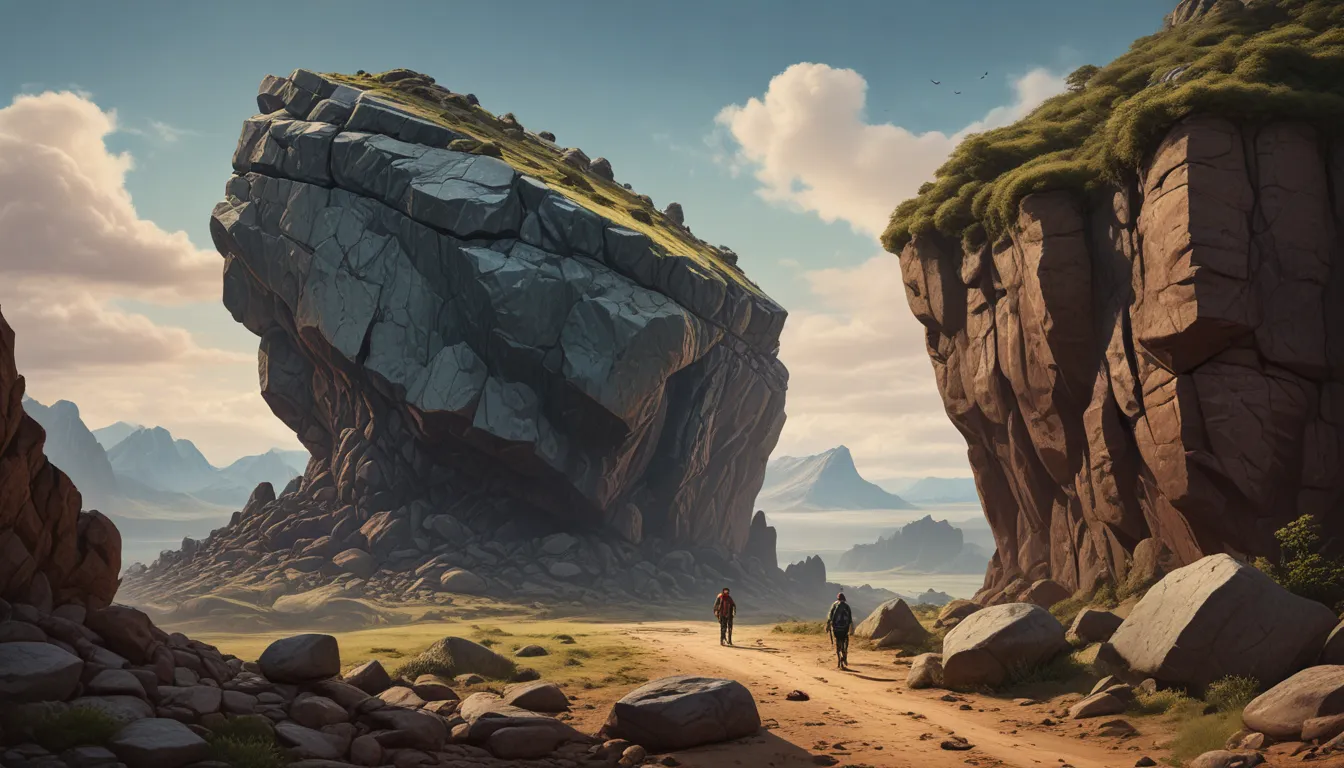A Note About Images: The images used in our articles are for illustration purposes only and may not exactly match the content. They are meant to engage readers, but the text should be relied upon for accurate information.
Inselbergs, also known as monadnocks or bornhardts, stand tall and proud as rugged geological formations that defy the forces of erosion. These solitary rocky outliers have captured the imagination of scientists and nature enthusiasts alike, offering a glimpse into the immense power and beauty of nature. In this article, we will delve into the intriguing world of inselbergs, uncovering eight astonishing facts that highlight their geological significance and cultural impact.
The Enigmatic Isolated Rock Formations
Inselbergs, characterized as isolated rock formations that rise abruptly from the surrounding plain, come in various shapes and sizes, from small hills to massive mountains. Composed of hard and resistant rocks like granite, these geological wonders can be found in flat or gently sloping landscapes across the globe. Their solitary presence adds a touch of mystique to the surrounding scenery, drawing attention to their unique features and geological importance.
Unveiling the Formation Process
The formation of inselbergs is a gradual process that spans millions of years, starting with the erosion of surrounding rocks. As these rocks weather and erode away, a prominent and isolated rock formation is left behind. Over time, the forces of weathering and erosion shape the inselberg into its distinct and often dramatic appearance, showcasing the power of natural processes in sculpting the Earth’s surface.
Exploring Unique Ecosystems on Inselbergs
Due to their isolated nature, inselbergs serve as habitats for a diverse range of plants and animals that have adapted to the specific conditions found on these rocky outcrops. Many inselbergs are known for their rich biodiversity, harboring rare and endemic species that are unique to these environments. The presence of distinct ecosystems on inselbergs adds to their ecological significance and highlights the importance of preserving these natural habitats.
Delving into Cultural Significance
Throughout history, inselbergs have held cultural and spiritual significance for indigenous communities around the world. These natural landmarks are often associated with myths, legends, and rituals, acting as sacred sites that reflect the cultural heritage of different societies. The symbolic value of inselbergs transcends their geological origin, resonating with the deep-rooted beliefs and traditions of diverse cultures.
Inspiring Artistic Expressions
The majestic beauty and distinctive shapes of inselbergs have inspired artists for centuries, leading to the creation of captivating works of art that capture their essence. Painters, photographers, and writers have all been drawn to the awe-inspiring presence of inselbergs, incorporating them into their creative expressions. The artistic interpretations of inselbergs reflect the profound impact of these geological formations on human creativity and imagination.
Unveiling Uluru, the Iconic Inselberg
Among the most famous inselbergs in the world is Uluru, also known as Ayers Rock, located in the heart of Australia. This massive sandstone monolith stands as an iconic symbol of the Australian Outback, commanding attention with its impressive height and cultural significance. Uluru’s majestic presence exemplifies the allure of inselbergs and their enduring impact on the landscapes they inhabit.
Exploring Inselbergs Beyond Earth
While inselbergs are primarily associated with Earth, similar formations can be found on other planetary bodies, such as Mars. Mars features inselberg-like structures known as “yardangs,” which are shaped by erosion from wind and showcase the universal relevance of geological processes across different celestial bodies. The study of inselbergs in extraterrestrial environments offers valuable insights into the geological history of other planets and the forces at play in shaping their landscapes.
Enriching Scientific Understanding
Inselbergs continue to be a subject of scientific study, as researchers and geologists strive to unravel the mysteries of these unique landforms. By investigating the formation and evolution of inselbergs, scientists gain valuable insights into the geological processes that shape our planet and the complex interactions between rocks, erosion, and weathering. The enduring scientific interest in studying inselbergs highlights their role as natural laboratories for understanding Earth’s dynamic geology.
Embracing the Wonder of Inselbergs
In conclusion, inselbergs stand out as fascinating geological formations that offer a window into the intricate processes that shape our planet’s landscape. From their isolated existence to their cultural and artistic significance, inselbergs represent a harmonious blend of nature’s resilience and beauty. Whether you’re a geology enthusiast or simply curious about the wonders of the natural world, exploring the astonishing facts about inselbergs is sure to expand your knowledge and appreciation for Earth’s diverse landscapes.
Frequently Asked Questions
-
What is an inselberg?
An inselberg is a rocky hill or small mountain that rises abruptly from a surrounding plain or relatively flat landscape. -
How are inselbergs formed?
Inselbergs are typically formed through a combination of uplift, erosion, and weathering. The uplift of the land exposes the inselberg, while erosion and weathering shape it into its distinctive form. -
Do inselbergs have cultural significance?
Yes, inselbergs often hold cultural and spiritual significance for indigenous communities. They are regarded as sacred sites and are often associated with ancient myths and legends. -
Where can inselbergs be found?
Inselbergs can be found in various parts of the world, including South Africa, Australia, Namibia, Brazil, and the United States. -
Can inselbergs be climbed?
Inselbergs can sometimes be climbed, but it depends on the specific inselberg and local regulations. Some inselbergs are protected or considered sacred and are off-limits for climbing. -
Are inselbergs made of a specific type of rock?
Inselbergs can be composed of different types of rocks, including granite, quartzite, sandstone, and basalt. -
Can inselbergs change over time?
Yes, inselbergs can undergo changes due to erosion, weathering, and geological processes. The shapes and sizes of inselbergs can evolve over long periods of time. -
Are inselbergs considered natural landmarks?
Yes, inselbergs are often considered natural landmarks and are valued for their aesthetic and geological significance.
In exploring the enigmatic world of inselbergs, we uncover not only the geological wonders that shape our planet but also the profound cultural and scientific significance of these isolated rock formations. Embrace the awe-inspiring beauty of inselbergs and embark on a journey of discovery that reveals the intricate processes and enduring impact of nature’s marvels.






